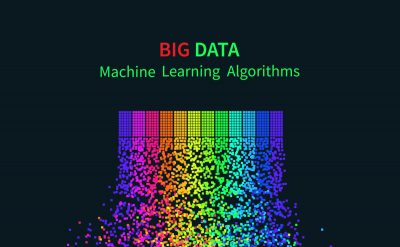Big data is a statistical term that describes the large volume of data. It includes both structured and unstructured form of data that are generated on a daily basis. Though big data is a complete term that describes the amount of data, for the enterprises, it’s not the amount of data that is responsible; it’s what the organizations want to do with data that matters. Big Data can be analyzed for insights that provide the leaders with better decisions making capabilities. Most enterprises have adopted a string of analytics tool that can assist in analyzing the consumer data to make the decision making based on facts and numbers rather than intuition. Big data is a relatively new term that was invented at the start of the ’90s when common analytics terms were failing to stand against the upsurge of data. Big data is a complete field that analyzes, systematically extracts information or otherwise deal sets that are too large or complex to be dealt with traditional data processing application software. Big Data is marred by many challenges that include capturing data, data storage, data analytics, search, visualization, querying, updating, information privacy and data source. Big data first started with simpler concepts of analysis wherein volume, variety, and velocity were the driving factors for the development of big data tools however later the shift in data made the enterprises go ahead with other terms such as big data veracity, i.e., filtering noise from the data and value.
The term big data became a strong talking point during the storage solutions were needed for data, industry experts and data scientists had emerged from the complete lack of awareness of data storage to bring new scales. The concept gained momentum during the 2000s when industry leader Dough Laney articulated the big data on four different terms for defining.
Volume: Organizations collect data from various sources; this may include different sources like website interaction, social media touch points and real-time data collection from various sources either from machines or human-machine interaction or machine-machine interaction. Over the last few years, we have seen data storage is a problem because unstructured data tend to become unmanageable, data languages such as Hadoop, R, Scala, and SAS is used to define such data.
Variety: Data comes in all type of formats- from structure type to unstructured type; all data play a critical role in big data analytics. From structured numeric data in the traditional database to unstructured text documents, emails, audio, video, financial interactions, and stock ticker data. The variety of data is what makes big data more important as part of structural analysis to compress that data based on the type.
Velocity: Data streams growth is exponential, and the interaction results in defining the goals in a much more definite way. Various sensors, iterations or applications give us millions of data daily and making the use of the easiest channel that can improve the velocity of data storage.
Veracity: One of the reasons big data has seen improved results with such large chunks of data is veracity. Each data has a large amount of noise, and this result in data becoming inaccurately analyzed during the process, the quality of data gives the analysis results. Big data must filter the small and major noises to improve the data filtrations.
Data must be processed with advanced tools of analytics and Algorithms to reveal the meaningful insights that can be updated with data. For example, when an analytics tool is applied to the study the factory output the age of the tools, the daily worker’s productivity along with device breakdown all should be combined to get an accurate result.
Why is big data important?
Enterprises and industry leader need to understand that big data doesn’t revolve around how much data you have but what you do with it. You can take data from any source and analyze it to find various results that can benefit you on decisions making.
1. It will assist you in making a better decision to make your services/ products cost-effective.
2. Reducing the amount of time to implement new products or services.
3. Big data results might also provide you with meaningful insights about various opportunities to build new products or services.
Big data has increased the demand for information management specialists across the globe, major enterprises such as Software AG, Oracle Corporation, IBM, Microsoft, SAP, EMC, HP, and Dell have spent close to $ 15 billion on software firms that are specializing in the data management and analytics. In 2010, it was estimated that the big data industry is close to $100 billion at this almost growing at the unprecedented rate of 10 percent a year.
Major economies around the world are increasingly investing in big data. Currently, there are 4.6 billion mobile phone subscriptions in the world and almost 1 to 2 billion populations accessing the internet daily. While the connectivity has been one major source of data generation, companies are trying to use this data to drive more products or services to become profitable today.
The effective capacity to exchange information through the telecommunication networks was 281 petabytes in 1986, 471 petabytes in 1993, 2.2 exabytes in 2000, and 65 exabytes in 2007 and 2014 we saw 667 exabytes annually. According to a recent estimate, one-third of the global information stored is in alphanumeric test and still image data, which is one of the most useful forms of data. Big data is potentially still in the nascent stage of development. Enterprises that are approaching big data vendors for providing tools that can solve the current capabilities, though experts recommended the development of in-house solutions custom-tailored to solve the companies’ problem in hand if the company has sufficient technical capabilities.
Conclusion
The imperative question that can be answered with data, whether you need to look at the full set of data to draw conclusions about the properties of data or sample is good enough. The big name data itself contains a term related to size, and this is an important characteristic of big data. Big data can be broken by various data point categories such as demographic, behavioral, psychographic and transactional data, with large sets of data point’s marketers are able to create and utilize more customized segments of consumers for more strategic targeting.
To know more, you can download the latest whitepapers on big data.









































































